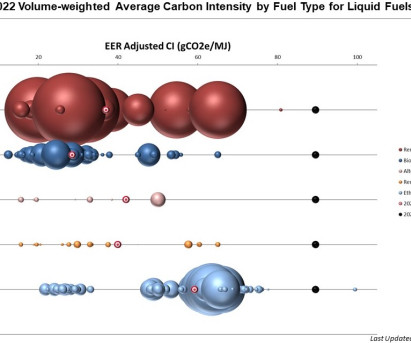CARB: clean fuels replaced more than 50% of diesel used in California in Q1 2023
Green Car Congress
AUGUST 24, 2023
California’s Low Carbon Fuel Standard (LCFS), which requires fuel producers to reduce the carbon intensity of fuel sold in the state, is largely responsible for the shift by encouraging the use and production of cleaner alternatives. Since compliance began, the program has helped to replace more than 8.6 billion gallons of diesel.






























Let's personalize your content